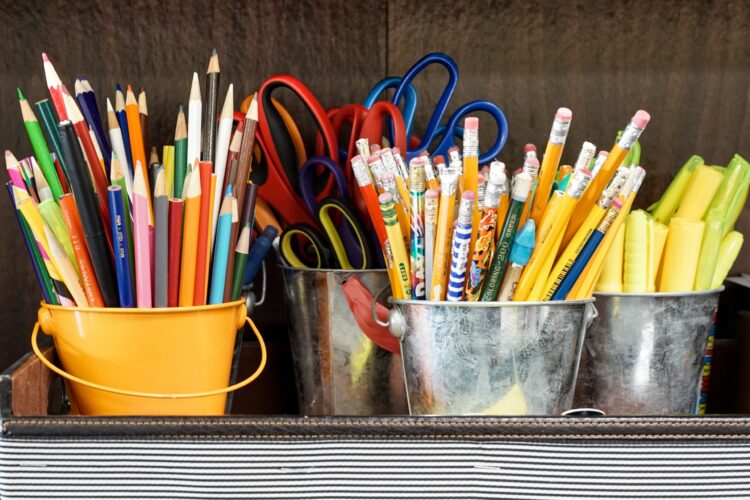By Jacqui Banaszynski
According to my pre-Wordle morning scans of social media in recent days, it's back-to-school time. That seems awfully early to me (What happened to waiting until after Labor Day?), but my own teaching career found me in front of a classroom by mid-August. And mid-August always found me in a scramble to catch up before I even started. Such is the drift of a summer that never lasts long enough.
In that spirit, to those who teach and study and practice (because practicing is doing) journalism and writing, remember that Nieman Storyboard is a resource waiting to be tapped, as are our sister sites, Nieman Reports, which explores challenges and leadership issues in journalism, and Nieman Lab, which tracks and breaks industry news about technology, business developments and notable names. So too many of the other free sites where journalists go behind the byline to explain how their work is done and why it matters in today's society. Three of my favorites: Poynter, where you can find craft lessons from the always wise, always entertaining Roy Peter Clark; The Open Notebook, which dives behind the scenes of science-related journalism but offers wisdom for coverage of any subject; and writing lessons from Chip Scanlan, who regularly features smart Q&As with top writers from a range of fields.
There are many, many others of great value. The danger of any list is what should be on it that's not. The key is to know that they are there, and to hunt for those that speak to the kind of work you're teaching, learning or creating. I am often asked what textbooks I found most useful when teaching at the Missouri School of Journalism. I had a select few I dipped into, but they weren't really textbooks as much as anthologies or lessons collected from journalism conferences and keynotes. Traditional textbooks are essential for the study of journalism history, ethics and core principles/practices. But as a teacher and editor of craft — of the work being done in the moment — I found it more productive to tap that work more directly, and to lean on the generous wisdom of professional journalists of the past and present.
I'm trying to gather some of the best teaching tools being used in the classroom today. Easier said than done because all those teachers no doubt find themselves scrambling, as I always did, at semester's start, but I'll give it my best shot. I'll also provide a few sample assignments you are welcome to steal — I mean, emulate — and shape as your own.
I hope faculty and students alike have a great semester. When you stumble, you can always fall back on the best advice I ever received from an editor: Kick ass, take names and remember to have fun.
According to my pre-Wordle morning scans of social media in recent days, it's back-to-school time. That seems awfully early to me (What happened to waiting until after Labor Day?), but my own teaching career found me in front of a classroom by mid-August. And mid-August always found me in a scramble to catch up before I even started. Such is the drift of a summer that never lasts long enough.
In that spirit, to those who teach and study and practice (because practicing is doing) journalism and writing, remember that Nieman Storyboard is a resource waiting to be tapped, as are our sister sites, Nieman Reports, which explores challenges and leadership issues in journalism, and Nieman Lab, which tracks and breaks industry news about technology, business developments and notable names. So too many of the other free sites where journalists go behind the byline to explain how their work is done and why it matters in today's society. Three of my favorites: Poynter, where you can find craft lessons from the always wise, always entertaining Roy Peter Clark; The Open Notebook, which dives behind the scenes of science-related journalism but offers wisdom for coverage of any subject; and writing lessons from Chip Scanlan, who regularly features smart Q&As with top writers from a range of fields.
There are many, many others of great value. The danger of any list is what should be on it that's not. The key is to know that they are there, and to hunt for those that speak to the kind of work you're teaching, learning or creating. I am often asked what textbooks I found most useful when teaching at the Missouri School of Journalism. I had a select few I dipped into, but they weren't really textbooks as much as anthologies or lessons collected from journalism conferences and keynotes. Traditional textbooks are essential for the study of journalism history, ethics and core principles/practices. But as a teacher and editor of craft — of the work being done in the moment — I found it more productive to tap that work more directly, and to lean on the generous wisdom of professional journalists of the past and present.
I'm trying to gather some of the best teaching tools being used in the classroom today. Easier said than done because all those teachers no doubt find themselves scrambling, as I always did, at semester's start, but I'll give it my best shot. I'll also provide a few sample assignments you are welcome to steal — I mean, emulate — and shape as your own.
I hope faculty and students alike have a great semester. When you stumble, you can always fall back on the best advice I ever received from an editor: Kick ass, take names and remember to have fun.



